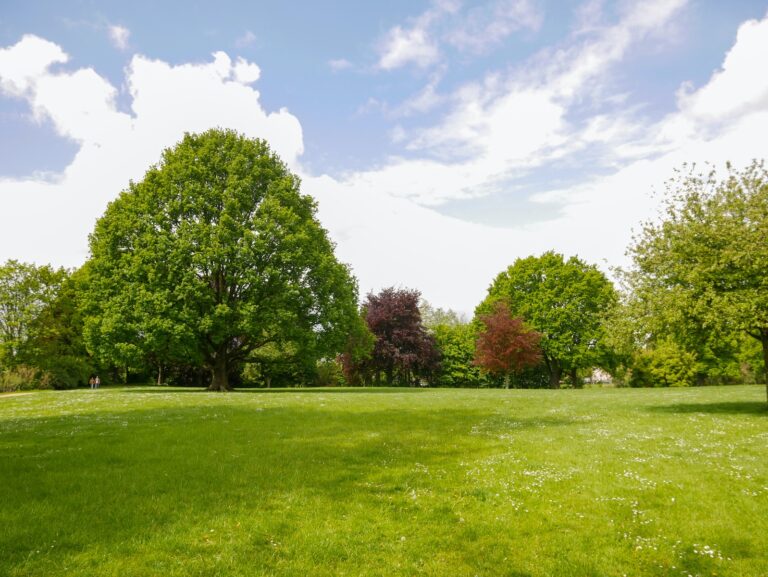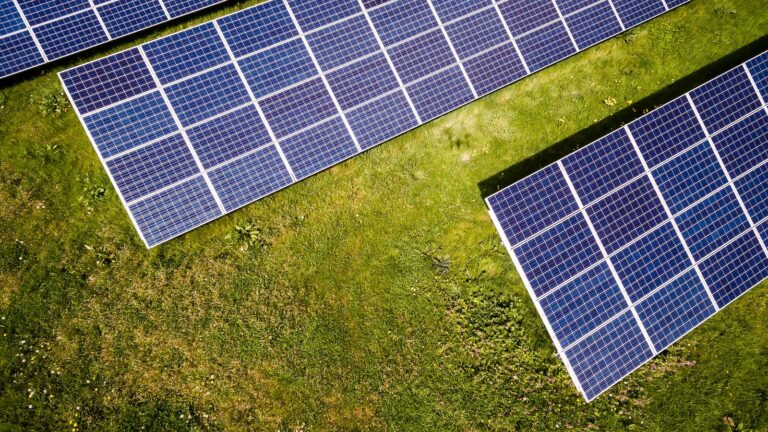How to Avoid Common Mistakes and Problems with Lawn Aeration

Are you tired of dealing with a lackluster lawn? Do you find yourself constantly struggling to keep your grass healthy and green? Well, fear not! The secret to achieving a lush and vibrant yard is proper lawn care. And one crucial aspect of maintaining a healthy lawn is aeration. However, many homeowners often overlook the importance of this process or make common mistakes that can lead to further problems down the line.
Don’t let this happen to you! In this blog post, we’ll be discussing how to avoid these common mistakes and problems with lawn aeration so that you can achieve the beautiful yard of your dreams. So sit back, relax, and get ready for some valuable tips on keeping your grass looking its best year-round!
What is Lawn Aeration?
Lawn aeration is the process of making small holes in your lawn to allow air, water and nutrients to reach the grass roots. This helps the grass to grow healthier and stronger.
There are two main types of lawn aeration: mechanical and manual.
Mechanical aeration is done with a machine that has special spikes or tines that puncture the ground as it is driven over the lawn. This type of aeration is best for large lawns or areas where there is a lot of foot traffic.
Manual aeration is done by hand using an aeration tool, such as a hand-held core aerator or plugger. This type of aeration is best for small lawns or areas where mechanical aeration is not possible.
Aeration should be done every year to keep your lawn healthy. The best time to do it is in the fall, when the weather is cooler and the grass is growing actively.
Advantages and Benefits of Aeration
Lawn aeration can often be seen as a necessary evil – it’s something you know you should do to keep your lawn healthy, but it’s also a lot of work. However, lawn aeration can actually be a very easy and beneficial process, as long as you avoid some common mistakes. Here are some advantages and benefits of lawn aeration:
1] Aeration helps improve drainage and prevents waterlogging.
2] Aeration helps break up compacted soil, making it easier for roots to grow and giving your lawn a healthier appearance.
3] Aeration can help reduce thatch build-up, improving the health of your lawn overall.
4] Aerating your lawn regularly will help stimulate new growth, resulting in a thicker, lusher lawn.
5] Lawn aeration is relatively inexpensive and easy to do (especially if you do it yourself), so there’s really no excuse not to!
6] Aeration can also be used to help fertilizers penetrate into the soil more deeply, which can help maximize their effectiveness.
Common Mistakes of Aerating Your Lawn
There are a few common mistakes that people make when aerating their lawns. One of the most common is failing to properly prepare the lawn before aeration. This can lead to compaction, which will make it more difficult for the aerator to penetrate the soil and do its job. Another mistake is aerating too frequently. Aeration should only be done every few years, as over-aerating can damage the roots of your grass and cause other problems.
Another common mistake is not hiring a professional to do the job. While it is possible to rent an aerator from a home improvement store, it is best to leave this task to the professionals. They will have the experience and knowledge necessary to ensure that your lawn is properly aerated. Be sure to follow up aeration with some form of fertilizer or grass seed so that your lawn can recover quickly and remain healthy.
Tips to Avoid Common Mistakes and Problems with Lawn Aeration
1] Don’t wait too long to aerate your lawn. The best time to aerate is in the fall, before the first frost. This will give your lawn time to recover from the stress of aeration before the winter sets in.
2] Don’t aerate if your lawn is wet. Aerating when the ground is too wet will compact the soil and make it more difficult for your lawn to recover. Wait until the ground is dry before aerating.
3] Use a garden hose to mark out areas that you don’t want to aerate. This will help you avoid damaging sprinkler heads or other underground utilities.
4] Only use a core aerator on your lawn. This type of aeratorremove plugs of soil from the ground, which helps improve air and water circulation in the root zone. Spike-type aerators can damage your lawn by compressing soil and causing irreparable harm to delicate grass roots.
5] Water your lawn before and after aerating. It will help make it easier to remove the soil plugs, and it will also help keep the newly exposed roots hydrated.
6] Aerate lightly if you have a clay soil. Clay soils are naturally dense and compacted, so aerating lightly is best. Do not use deep aeration unless absolutely necessary; it can lead to drainage problems in clay-heavy soils.
Preparing for Lawn Aeration

It is crucial to properly prepare your lawn for aeration to avoid any common problems or mistakes. First, determine the best time of year to aerate your lawn based on the type of grass you have. For most cool-season grasses, late summer or early fall is the ideal time for aeration. However, if you have a warm-season grass, it is best to aerate in late spring or early summer.
Next, make sure the ground is moist before aerating. If the ground is too dry, the plugs will be hard to remove and may cause damage to your lawn. Conversely, if the ground is too wet, the plugs will not be as effective in breaking up compaction. The best way to ensure optimal moisture levels is to water your lawn a few days before aeration.
Mow your lawn short – no more than 1/3 of its height – prior to aeration. This will help ensure that the plugs are not too long and difficult to remove. All of these steps will help you avoid any common problems or mistakes when preparing for lawn aeration!
Tools Needed for Lawn Aerations
If you want to avoid common mistakes and problems with lawn aeration, you need to have the right tools. Here are the tools you need for successful lawn aeration:
-Aeration machine: You can rent an aeration machine from a local garden center or hardware store. Be sure to read the instructions carefully before operating the machine.
-Spade: A spade will be needed to dig holes for the aeration plugs.
-Shovel: A shovel will be needed to remove any debris from the aeration holes.
-Watering can: After aerating your lawn, water it thoroughly to help the new plugs of grass take root.
-Rake: After aeration, you’ll need to rake the lawn to smooth out any ruts or bumps caused by the aeration.
-Topsoil: If your lawn has poor soil, adding some topsoil after aerating can help improve the quality of your grass.
Correct Technique for Aerating Your Lawn

Lawn aeration is a key part of keeping your lawn healthy and green. Aerating your lawn helps to reduce compaction, improve drainage, and encourage deep root growth. However, it’s important to use the proper technique when aerating your lawn, or you could end up doing more harm than good.
For the best results, use a core aerator that removes small plugs of soil from the lawn. Be sure to aerate in multiple directions to create a crisscross pattern. Avoid over-aerating by only going over each section of the lawn once.
After aerating, it’s important to reseed any areas where grass is thin or patchy. This will help fill in any resulting holes and help your lawn recover from the aeration process. Be sure to water regularly and follow all manufacturer’s instructions for best results.
Benefits of Professional Services for Lawn Aeration
Although lawn aeration is a simple do-it-yourself project, there are several benefits to hiring a professional service. For one, professionals have the right equipment to get the job done quickly and efficiently. They also have the experience to know how deep to aerate your lawn and how often to do it.
Another benefit of professional lawn aeration services is that they can help you avoid common mistakes and problems. For example, if you aerate your lawn too deeply, you could damage the roots of your grass. Or, if you don’t aerate frequently enough, your lawn may become compacted and difficult to grow.
Hiring a professional for lawn aeration can save you time and money in the long run. It’s important to choose a reputable company with experience in your local area. Be sure to get references and read online reviews before hiring anyone.
Conclusion
Aerating your lawn is an effective way to create a softer, healthier surface and promote lush grass growth. Properly aerating your lawn should be done with the right tools and in the right season. If you remember these tips, it will save you time and effort while ensuring that you get the best results possible when working on your turf. With proper preparation and attention to detail, you can successfully complete a successful project of lawn aeration!

James is a passionate writer and gardener with years of experience in home gardening. He is the author of several articles and blog posts on HomeGardenBlog.com, a platform where he shares his expertise and love for plants and gardening with the world.







